Teamwork is so important for managing projects successfully.
Yet, many teams still struggle to work together effectively, be it because of personality clashes, communication breakdowns, or simply not having the correct tools at their disposal to do so.
In this article, we’re going to take a look at the 5 stages of team development so that you can understand how to help your team collaborate together more effectively!
What are the stages of team development?
In 1965, a psychological researcher called Bruce Tuckman was focused on the theory of group dynamics.
At this time, he proposed four stages of team development that he believed necessary in order for a team to grow, tackle problems, find solutions, and deliver results.
And in 1977, he added a fifth stage to cover the breaking apart of a team at the end of a project.
These 5 stages of team development are still relevant today – perhaps now more than ever as more businesses work remotely.
The five stages of team development are:
2. Storming
3. Norming
4. Performing
5. Adjourning
Let’s take a look at each stage in more detail to help you implement them and improve team development in your business.
1. Forming
Forming – as the name suggests – refers to when the team is first formed. At this stage, team members are meeting for the first time, getting acquainted, organising responsibilities, and trying to find their place within the team.
In addition to being introduced to each other at this stage, the team will also be introduced to the task at hand – the reason they were all brought together in the first place!
How to make forming run smoothly
A good way to get any project started is with a kick off meeting. This gives everyone a chance to introduce themselves and establish roles and responsibilities that will help move the project along with ease.
If your team is all in one place, then a face-to-face kick off meeting is a great way to get things moving. If your team is spread out, you can still have a very successful kick off meeting with video conferencing.
Using a free tool like Google Meet will allow you to meet your team face-to-face, regardless of where you are in the world.

Another way to start your project off on the right foot is to use a project management system, like Project.co.
Project.co allows you to invite everyone on the team to your project so that all communications can be kept in one centralised and secure place.
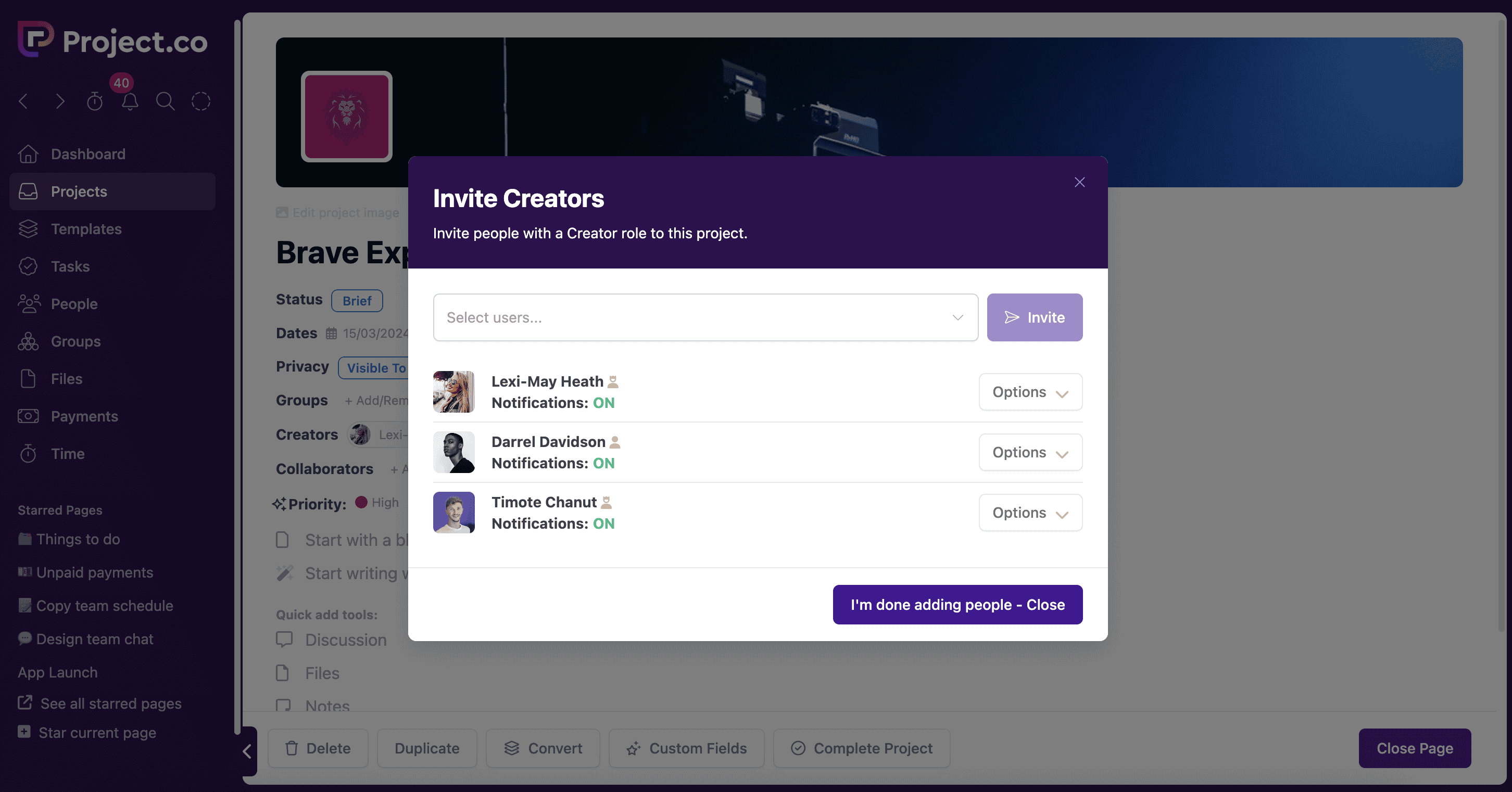
This includes people from your team, the client-side, and even freelancers. Plus, you can set different permissions for different groups, so you only share the most relevant information.
2. Storming
The second stage of team development is usually the most tumultuous, hence the name. But don’t panic, not all teams go through this period of storming.
In Tuckman’s original 1965 paper, 50% of teams actually jumped directly from stage 1 to stage 3, but for those that did not, the duration and intensity of the “storms” were varied.
Storming is the stage where everyone starts to find their voice. People begin sharing ideas and differing opinions come to light, which can result in clashes.
Having a meeting during the storming stage can feel a little bit like this:
During these storms, a strong team leader is essential for ensuring the project remains on track and productivity doesn’t suffer.
Failure to address problems here can result in long-term issues, but once this stage is passed through successfully, things will get easier.
How to make storming run smoothly
There are a few things you can do to reduce the intensity and duration of your storms. One way is to touch base with your team regularly through short stand up meetings, or sprints.
These short daily – or even weekly – meetings give everyone on the team the opportunity to air any issues or doubts they’re having, and help keep people on the same page.
If you feel your team’s not comfortable discussing issues face-to-face, you could utilise anonymous surveys that will allow people to speak freely to their team leaders and get issues resolved.
This is something that’s really easy to do through Google Forms. Starting with a blank form, you can add questions and topics for discussion:
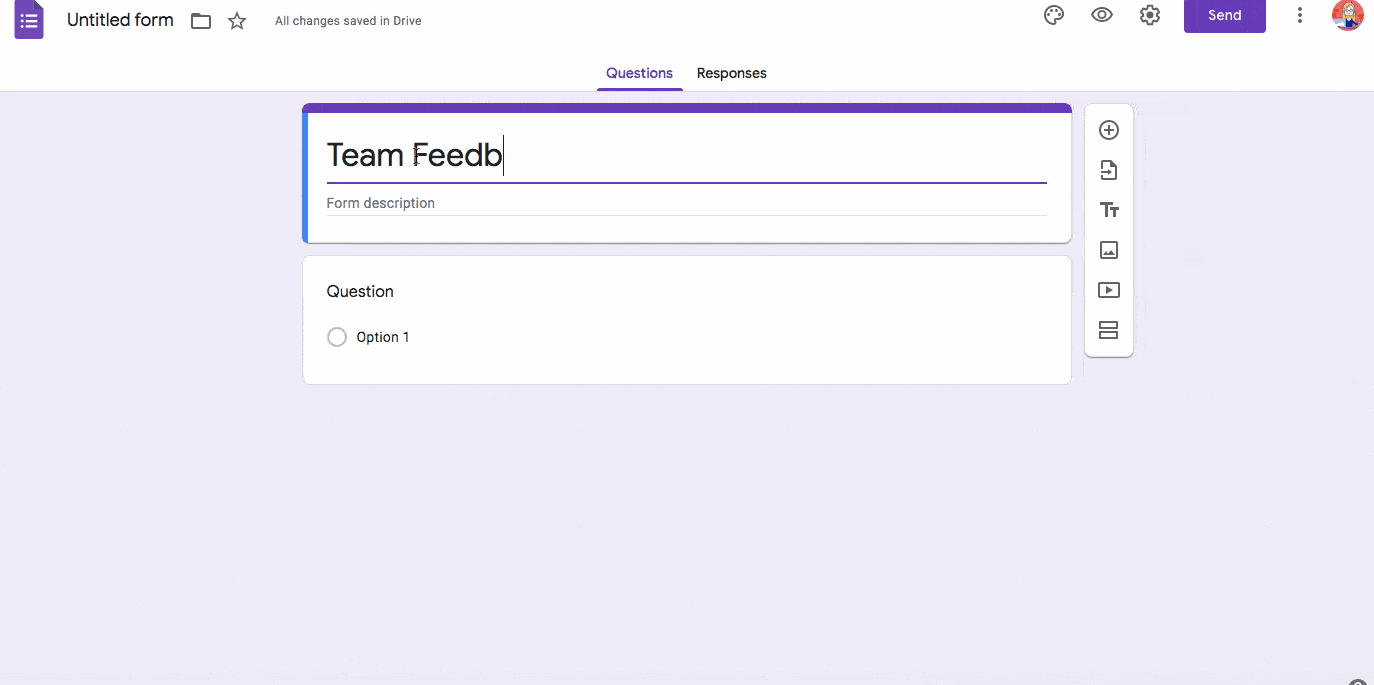
Team members can respond anonymously to the questions and then you can view their responses and deal with any issues:
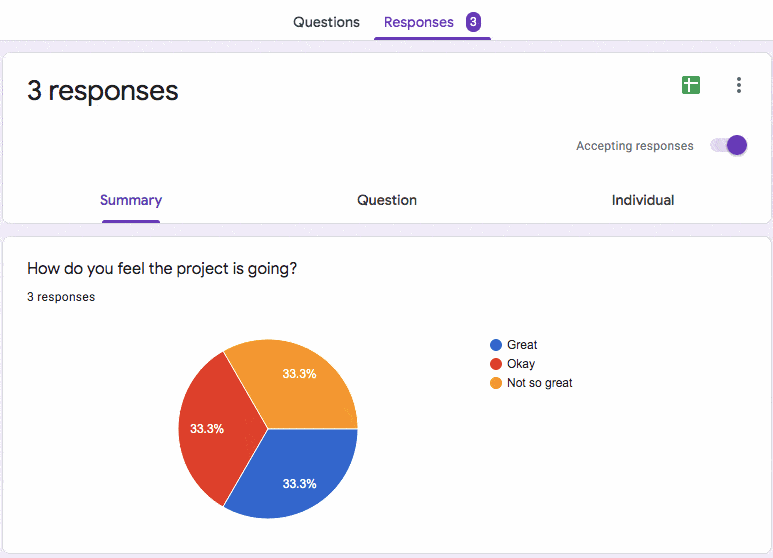
In addition to keeping communication flowing, it’s also extremely helpful to ensure that everyone knows what part of the project they are responsible for. This can reduce misunderstandings and help work to progress smoothly.
You can add tasks to your project via Project.co so that everyone on your team knows what they are required to do.
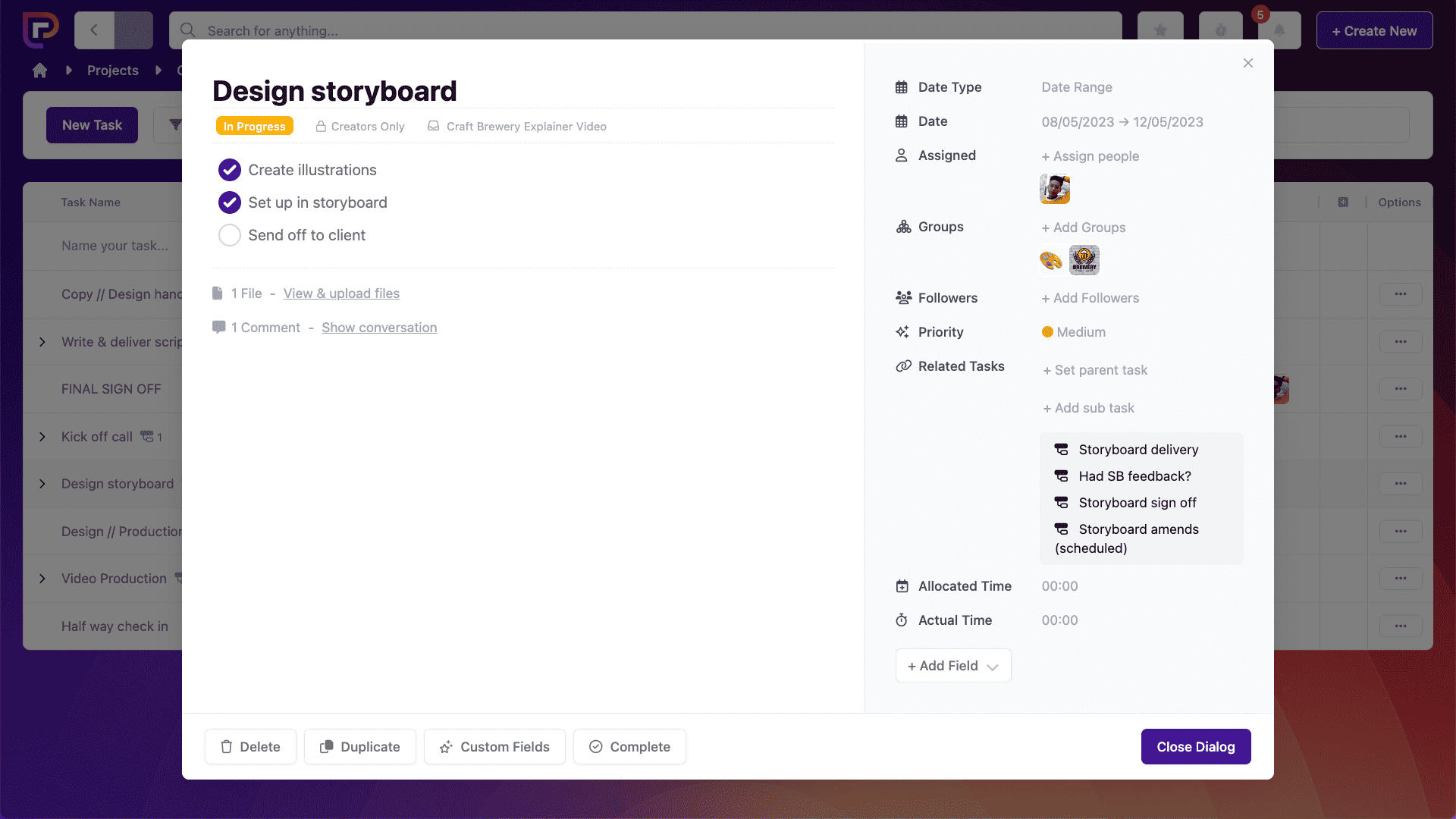
Tasks can be assigned to team members, departments, and also dates to ensure your project stays on track.
Team leaders can keep track of their team’s tasks via the scheduler view:
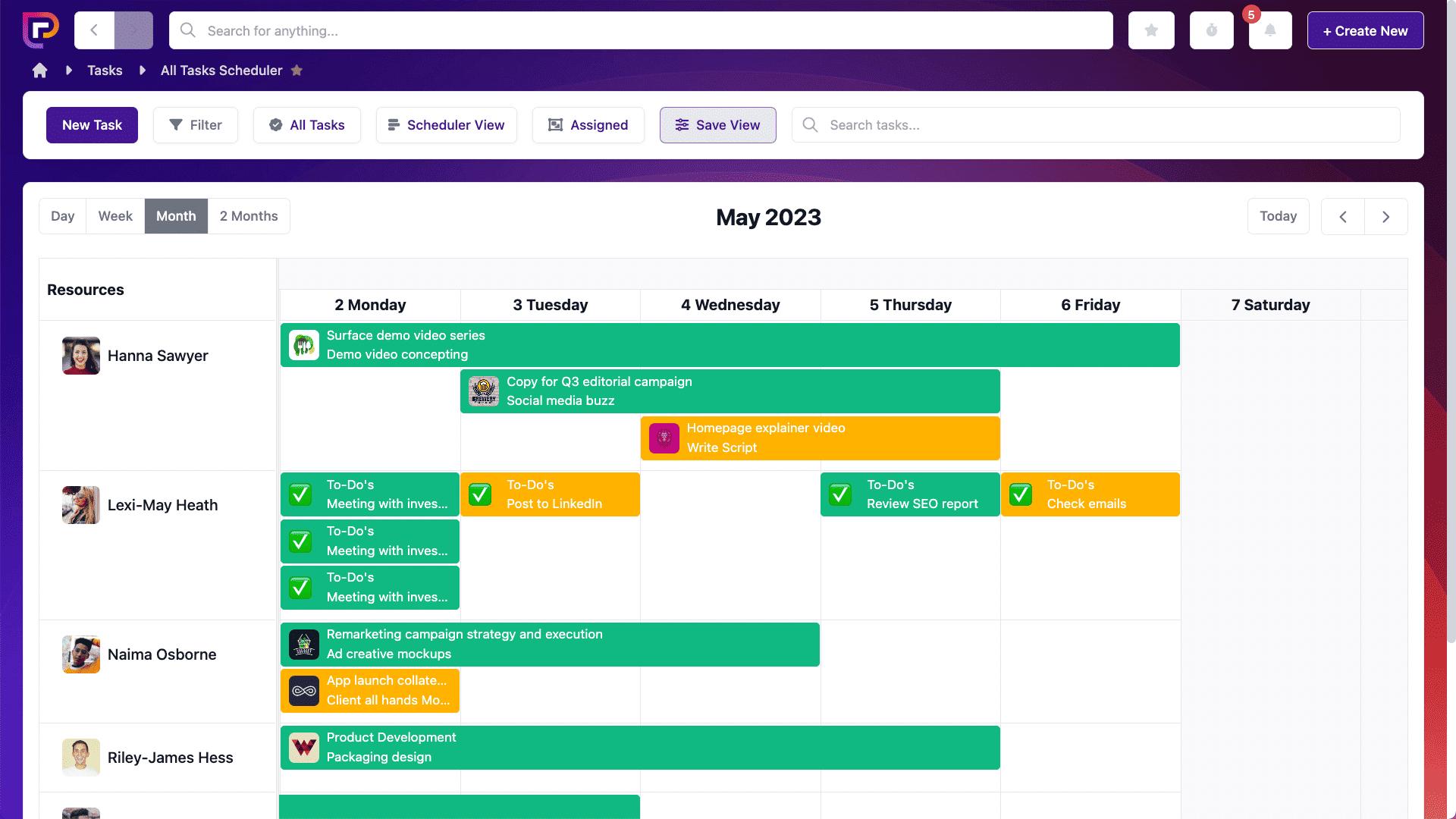
This view makes it easy to spot any bottlenecks and the drag-and-drop functionality means you can swiftly move tasks around to adjust your team’s workload.
3. Norming
By stage three, everything should have settled down nicely, and your team members should know how to work with one another effectively. This is called norming.
You can expect an increase in productivity at this stage as everyone understands their role better and can get stuck into their individual tasks, instead of being bogged down by internal conflict.
This period of norming also creates a safer space for people to share work and give feedback. This is because, after storming, everyone is now working together more happily towards the overall project goal.
How to make norming run smoothly
Although norming is a calm stage of team development, there are still things that you can and should do to help things run more smoothly.
Using collaborative tools will allow your team to share feedback and work together in real time.
When using Project.co, you can embed a variety of different live documents – from Google slides to Vimeo links – and collaborate on them in real time, without ever leaving your project!
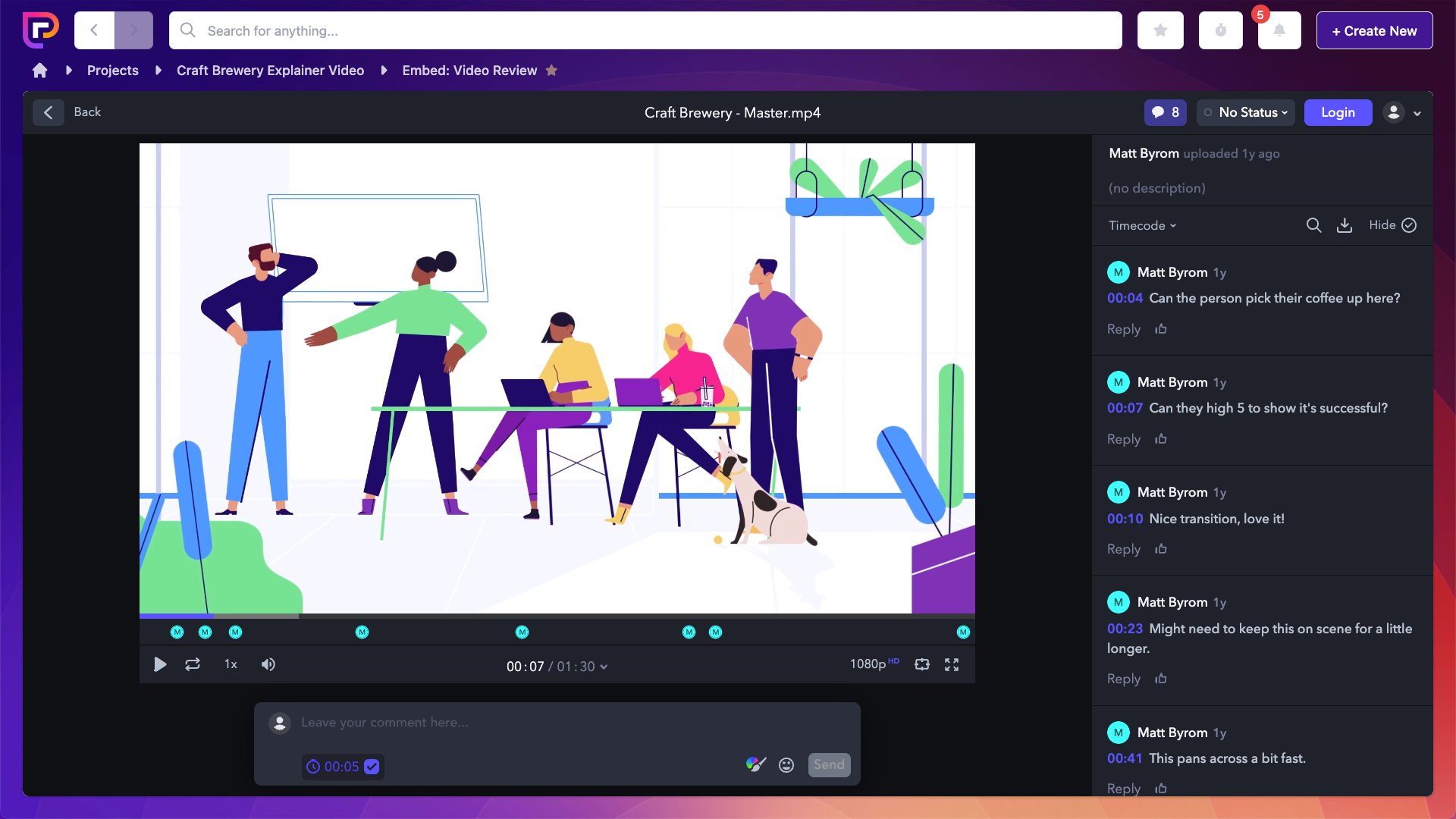
In addition to collaborating in real time, you should also encourage your team to communicate regularly. This could be via a chat app like Slack:
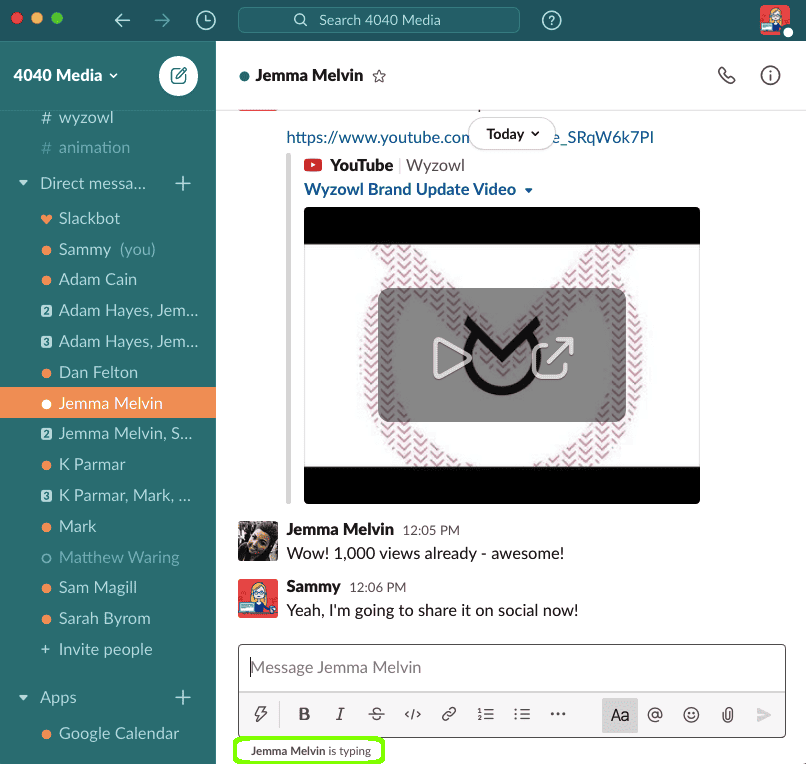
Or, if you’re working on a more long-term project, your team could meet for lunch on a regular basis to ensure that relationships remain strong.
Gallup have been studying relationships at work for over thirty years and their research has consistently found that having a best friend at work leads to better performance.
4. Performing
The fourth stage of team development is usually where teams reach their peak performance. This is because the level of cohesion and trust between team members has steadily increased over the three previous stages.
Of course, issues will still arise at every stage – even here – but at this stage, team leaders should have all the tools and understanding they need to resolve problems quickly and effectively.
The team can be considered “senior” at the performing stage. They’ve grown knowledge (both about each other and the project) and so they should be able to work independently and confidently.
How to make performing run smoothly
This one’s easy – just keep doing what you’re doing! The most important thing to do here is ensure that your teams have everything they need to be successful.
A tool that can help with this is a kanban board. A kanban board gives you a visual overview of all of the tasks for your project, so you can keep an eye on any bottlenecks or areas of pressure.

Our kanban boards can be personalised to suit your needs, and the drag-and-drop feature makes it easy to move tasks along as your project progresses.
5. Adjourning
This final stage is also sometimes referred to as “mourning”. At the end of the project, the team will begin to wrap up their tasks and start to disband and move onto other projects.
The reason this stage is important is because it can be used as an opportunity to debrief on the project and discuss what went well, and what didn’t go well, so that improvements can be made in the future.
How to make adjourning run smoothly
Having a review meeting at the end of your project can be a really productive – and possibly even cathartic! – experience for everyone involved. This can give team members a chance to speak openly and honestly about what worked and what didn’t throughout the project.
From a profitability point of view, it can also help to track the time spent on your projects. This way, you’ll know exactly how long everything took and this can help you to improve your pricing and planning on future projects.
It’s easy to track your time with Project.co. All you need to do is select a team member, department, the project they worked on, and the date. Then simply enter the hours spent on the project on that day:
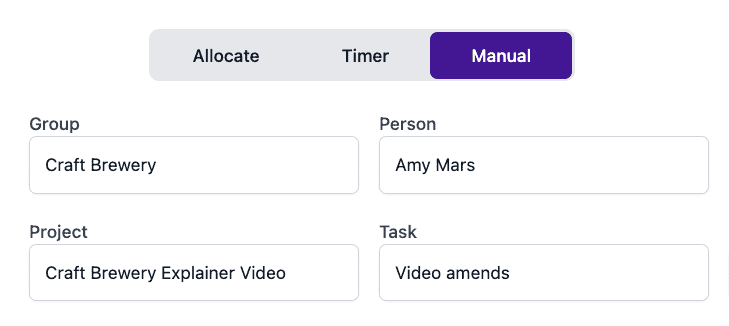
Final thoughts
By gaining a better understanding of the 5 stages of team development, you should have the tools you need to help your team collaborate more efficiently and productively.
A great place to start is with a project management software. According to recent research, usage of project management software has helped to improve team communication by 52%.
Give Project.co a try today and see what it can do for your team.





